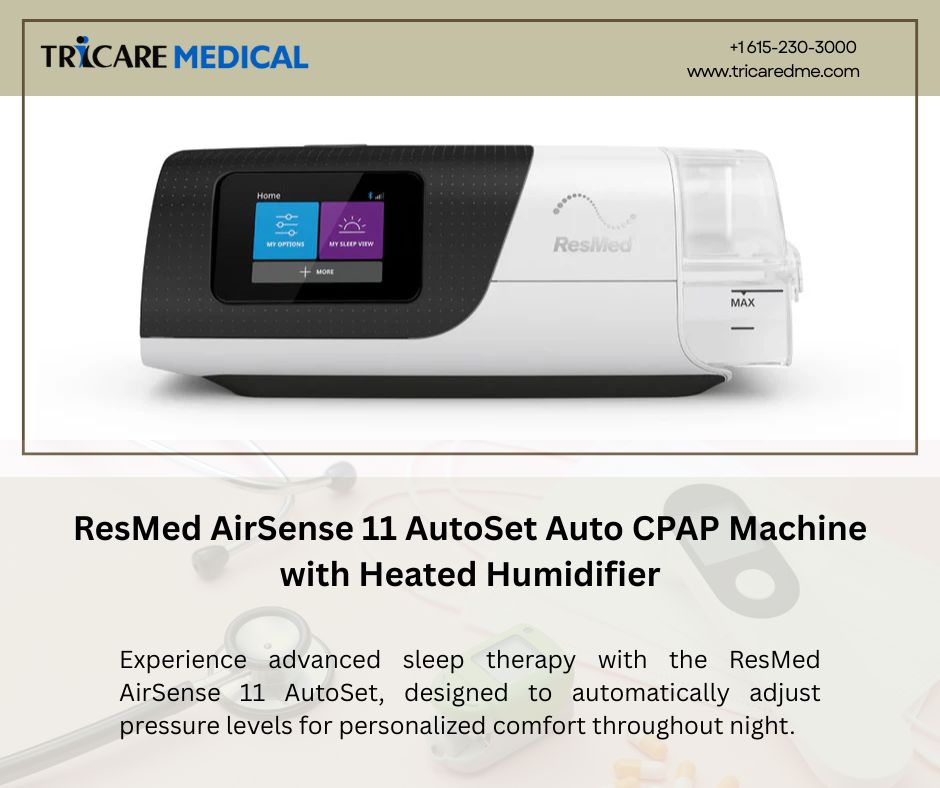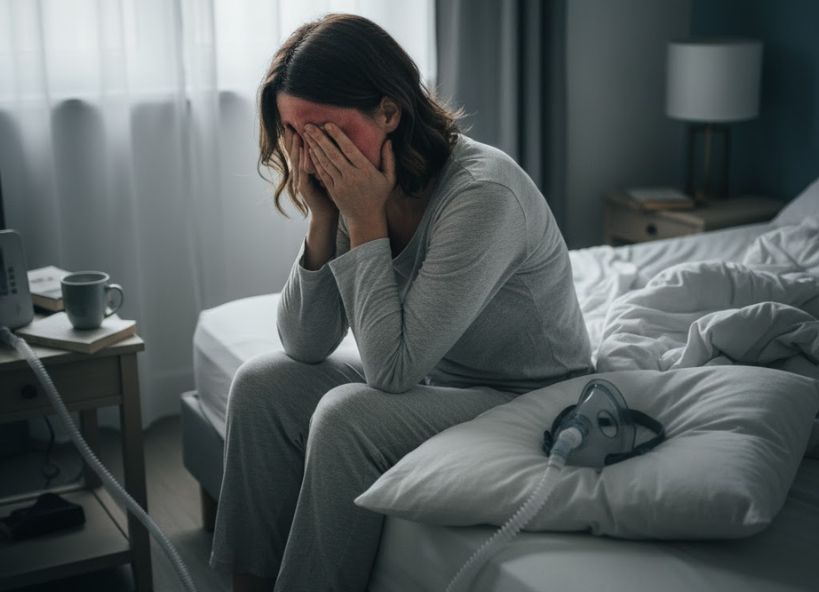Are You Using the Wrong CPAP Mask? Here’s How to Know and What to Do
- 5 min reading time
Continuous Positive Airway Pressure (CPAP) therapy is a lifeline for many people suffering from sleep apnea. By providing a steady flow of air through a mask, CPAP machines help keep airways open during sleep, reducing interruptions and improving sleep quality. However, the effectiveness of CPAP therapy heavily depends on wearing the right CPAP mask. Using the wrong mask can lead to discomfort, poor sleep, and even therapy failure. In this blog, we will explore the signs that you might be using the wrong CPAP mask, why the right fit matters, and tips on choosing the best mask for you.
Why the Right CPAP Mask Matters
A CPAP machine’s functionality is only as good as the mask interface it uses. The mask acts as a conduit between you and the machine, delivering pressurized air to your airway. If the mask does not fit properly, air can leak, pressure can drop, and the therapy loses effectiveness. Moreover, a poorly fitting mask can cause physical discomfort such as skin irritation, soreness, headaches, or even anxiety about wearing it.
Because every face shape and sleep pattern is unique, CPAP masks come in several styles intended to accommodate a wide range of users. Wearing the right mask ensures you stay comfortable and compliant with your treatment for better health outcomes.
Signs You Might Be Using the Wrong CPAP Mask
If you’re experiencing any of the following issues, it could be a warning sign that your CPAP mask isn’t the right one for you:
1. Air Leaks and Noise
Constant air leaks around the mask seals are a common indication of a poor fit. You might hear hissing sounds or feel air blowing on your face or in your eyes while you sleep. These leaks can cause dry eyes or redness and diminish the therapy’s effectiveness.
2. Discomfort or Pain
If you notice redness, pressure sores, or pain on your nose bridge, cheeks, or forehead, your mask may be too tight, the wrong shape for your face, or made from materials that irritate your skin.
3. Difficulty Falling or Staying Asleep
Wearing a mask that feels bulky, claustrophobic, or difficult to breathe through can lead to anxiety or restlessness, making it hard to fall asleep or stay asleep through the night.
4. Frequent Mask Adjustments During the Night
If you find yourself repeatedly waking up to adjust your mask, this indicates poor fit or incompatibility with your sleeping position.
5. Nasal Congestion, Dry Mouth, or Headaches
Some masks can dry out your nasal passages or mouth, especially if the mask doesn’t fit well or if your humidifier settings are incorrect. Headaches upon waking can also be linked to airflow issues.
Common Types of CPAP Masks and Who They Suit Best
Choosing the right mask style depends largely on your comfort preferences, facial structure, and how you sleep.
1. Nasal Masks
These cover the nose and are suitable for users who breathe through their nose during sleep. They are less bulky and allow more freedom of movement.
2. Nasal Pillow Masks
These deliver air through small cushions that rest at the nostrils. They are lightweight, minimal, and ideal for users who feel claustrophobic or wear glasses.
3. Full Face Masks
Covering both nose and mouth, these masks are best for mouth breathers or those with nasal obstructions. While effective, they tend to be bulkier and can cause more issues with leaks if the fit is poor.
4. Hybrid Masks
Combining aspects of nasal pillow and full-face masks, these cover the mouth but use nasal pillows. They’re suited for people who breathe through their mouth but want less bulk.
How to Find the Right CPAP Mask
1. Work with Your Healthcare Provider or CPAP Supplier
Your DME (durable medical equipment) provider or sleep specialist can guide mask selection based on your sleep study, breathing patterns, and facial features.
2. Try Multiple Masks
Many providers offer trial periods or mask fitting sessions. Don’t hesitate to try different types and sizes to see what feels best.
3. Check for Proper Fit
The mask should form a seal without feeling overly tight. Look for even pressure distribution and minimal leak when worn.
4. Think About Your Sleep Habits
If you move around a lot, avoid bulky masks. Consider nasal pillows or smaller nasal masks.
5. Consider Allergies and Skin Sensitivities
Masks made from hypoallergenic or softer materials may reduce skin irritation.
6. Maintain and Replace Properly
Even the best mask can cause issues if worn out. Replace cushions, headgear, and masks as recommended.
When to Seek Help or Consider Mask Alternatives
If discomfort or therapy issues persist despite trying different masks, consult your sleep specialist. Some patients benefit from advanced options like custom masks or alternate therapies such as BiPAP or APAP machines. Don’t give up — the goal is to find a setup that allows you to sleep comfortably and improve your health.
Read more:
How to Choose the Right CPAP Machine for Travel | Fixing ResMed CPAP Overheating Issues
Conclusion
Using the wrong CPAP mask can turn what should be a straightforward therapy into a nightly struggle. Recognize the signs of a poor fit, understand the different mask types available, and work closely with your healthcare team to find the right solution. With the proper mask, CPAP therapy can dramatically improve your sleep quality, daytime alertness, and overall well-being. Don’t let discomfort stand in the way of better sleep — get the right mask and breathe easier tonight!



